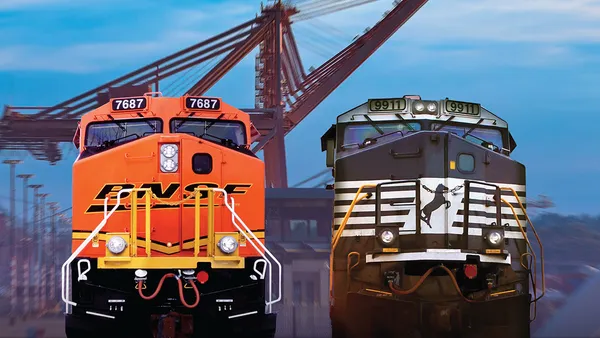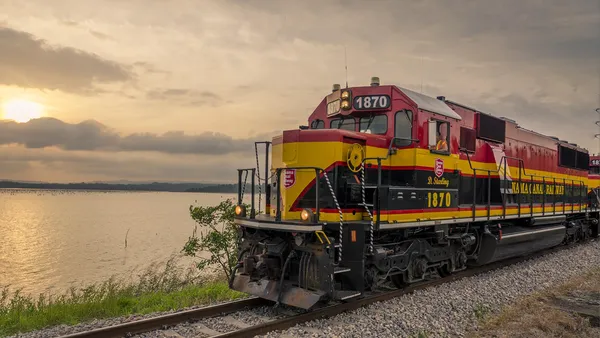"The only reason railroads have marketing departments is because they want to go after the business that is now being moved by truck," John Gray, senior vice president of policy and economics at the Association for American Railroads (AAR), told reporters at a media briefing Friday.
Part of that marketing strategy entails luring shippers that would normally transport by truck to instead choose rail. The option is particularly appealing for long-distance transportation, where rail can be the more efficient, environmentally-friendly and economical choice.
Rail can also be attractive to customers shipping through busy corridors, such as the Northeast and California. "It is so expensive to move a truck through congestion," Gray said.
Oil supply chains and hazardous material transport tends to favor rail. Pipelines are not developed to sufficient capacity for moving oil, and Kathy Kirmayer, general counsel and senior vice president of law at AAR, said transport of oil and hazmats tends to be safer by rail than by truck.
More recently, railroads have aimed to position themselves as service providers for customers — a factor that's been a point of contention between rail shippers and railroads.
They're touting precision scheduled railroading (PSR) as a way to effectively manage assets and rail transport. The model is no doubt controversial, but AAR executives expressed confidence for long-term success. "The objective long-term is you have a better-designed system that starts to eliminate some of the hiccups over time," Gray said.
It's not just better service that can help shift shippers from trucks to trains. Capitalizing on truck volumes is part AAR's freight policy agenda for 2019, in the form of removing incentives and subsidies for trucks. In the short term, the association supports a gas tax that would provide much-needed funds for infrastructure development. "That should be a transition into a long-term, truly equitable sustainable solution," said Ian Jefferies, AAR President and CEO.
What shape that solution takes remains to be seen. One option is a Vehicles Miles Traveled (VMT) fee system, which charges drivers or companies based on the number of miles they drive. The idea is gaining support as an increase of electric and hybrid vehicles creates less revenue from a gas tax, but arguably has the same strains on infrastructure as fuel-based vehicles. Research from Brookings found a VMT tax could raise $55 billion each year for highway spending.
Despite the competitive nature of the freight modes, the rail industry is acutely aware that not every shipment is ideally moved via rail. It depends on the region, but Gray said in general, journeys of fewer than 350 to 400 miles are not competitive for rail.
The answer lies in intermodal shipments. "We need a fully integrated network," Jefferies said "Truck to train to truck."
Intermodal shipments are currently rail's largest commodities, according to Gray. Intermodal volumes shattered records last year, although an impending slowdown in the economy and trade tensions could cause that growth to level off.
Still, e-commerce has created a trucking boom, and rail can't ignore trucks as partners nor as competitors. "They're among our best friends," Gray said. "At the same time, we don't want to be subsidizing them."















